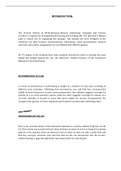Summary
Samenvatting alle literatuur An Introduction to Spatial Planning in the Netherlands 2024
- Course
- Institution
- Book
Summary of all literature for the course Spatial Planning year 2024, consisting of the complete book An Introduction to Spatial Planning in the Netherlands by Patrick Witte and 3 separate articles.
[Show more]












